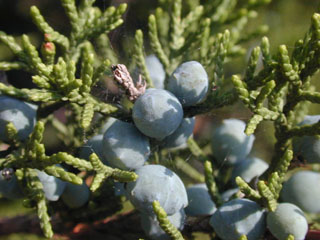Habitat management is the keystone of successful wildlife management. This statement has never been more true in Central Texas, where brush control is critical for maintaining important natural processes and suitable habitat for endemic wildlife. On March 25th, directors from Pedernales, Gillespie County, Comal-Guadalupe, Kendall, Kerr County, and Bandera soil and water conservation districts (SWCDs) attended a tour of the Honey Creek State Natural Area.
The Watershed Study in Honey Creek State Natural Area was established in 1999 by the Natural Resources Conservation Service (NRCS) to evaluate the combined effects of using selective brush removal (Ashe Juniper) to increase water quantity while protecting water quality. Phillip Wright, Range Management Specialist, with NRCS led the tour. Tour participants were taken to four sites to view equipment used to gather data for the Watershed Study. At each site, information was presented on how the equipment works and the results it has produced from cedar removal. The tour wrapped up with a walk along Honey Creek to see the stream flow that the Brush Removal has created. Continue reading Benefits of Brush Control for Wildlife Habitat Management

